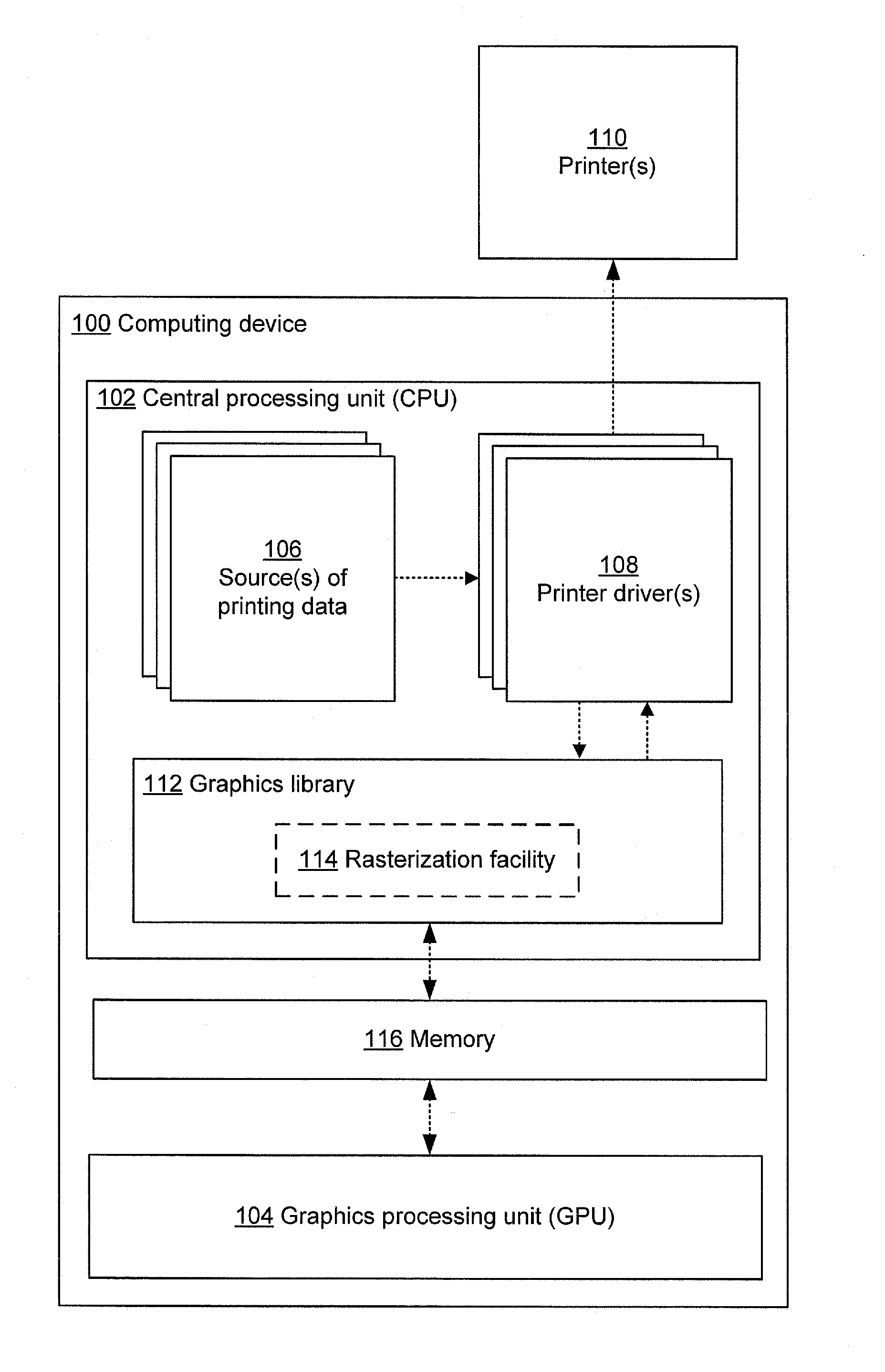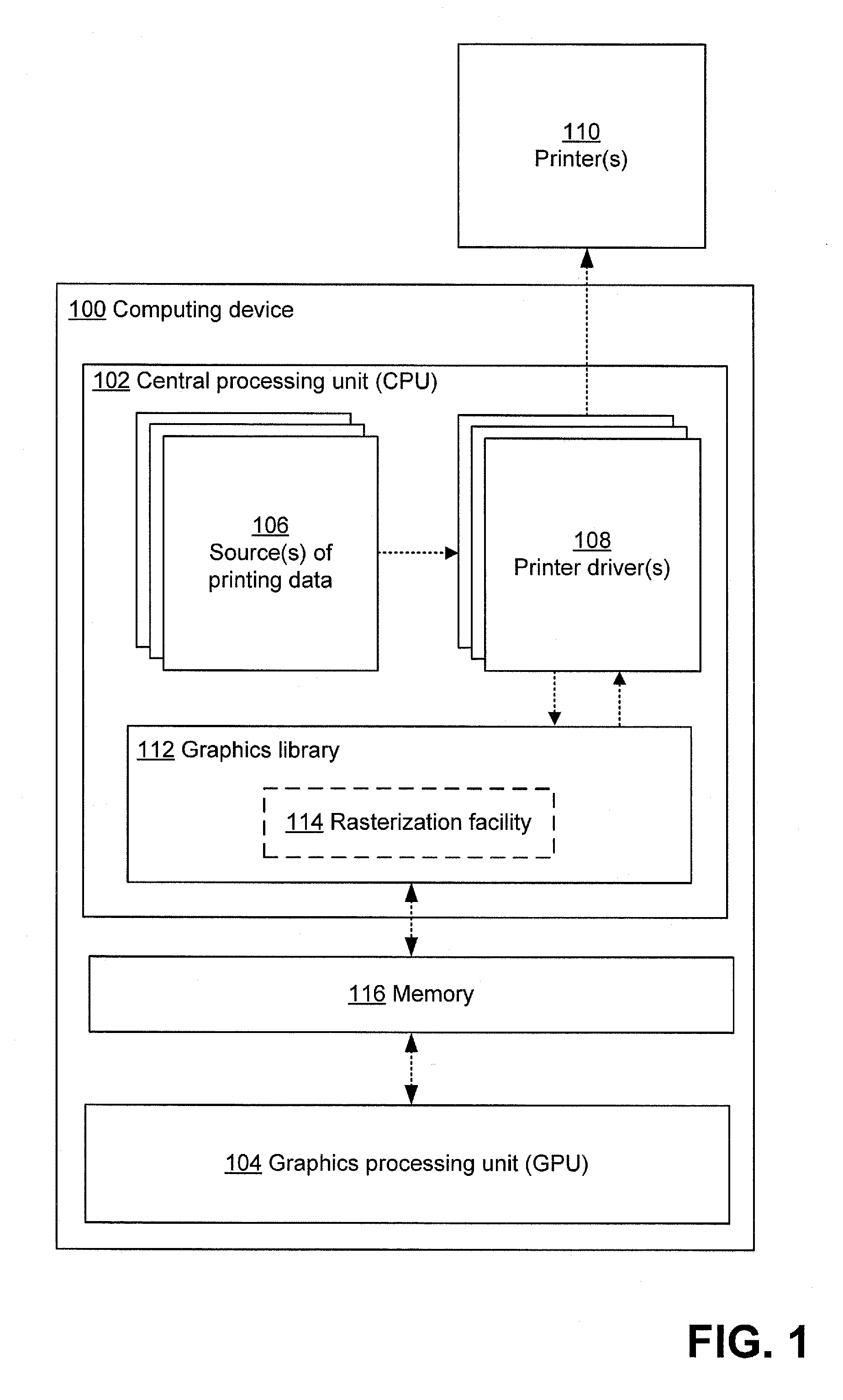Rasterization of printing data
a printing data and rasterization technology, applied in the field of rasterization of printing data, can solve the problems of inability to program or operate gpus to perform generic processing operations for data not related to electronic displays, disadvantages of gpu rasterization, and inability to perform rasterization on gpu, etc., to achieve the effect of fast and efficient operations
- Summary
- Abstract
- Description
- Claims
- Application Information
AI Technical Summary
Benefits of technology
Problems solved by technology
Method used
Image
Examples
Embodiment Construction
[0021]Applicants have recognized and appreciated that while GPUs may be specially adapted for rasterization operations, rasterizing printing data on a GPU may not be desirable in all cases. In some cases, rather, a general purpose central processing unit (CPU) may rasterize printing data more quickly or efficiently, despite that the CPU is not specially adapted in the manner of the GPU. Applicants have also recognized and appreciated that a division of operations between the CPU and GPU may result in speed or efficiency gains for rasterization, but that inefficient interactions between the GPU and CPU or an inefficient division of operations between the GPU and CPU may prevent the rasterization process from realizing such benefits. Applicants have recognized and appreciated, therefore, the advantages offered by techniques that determine, when a request to rasterize printing data is received, how to rasterize the printing data, including by selecting a CPU or a GPU on which to perfor...
PUM
 Login to View More
Login to View More Abstract
Description
Claims
Application Information
 Login to View More
Login to View More - R&D
- Intellectual Property
- Life Sciences
- Materials
- Tech Scout
- Unparalleled Data Quality
- Higher Quality Content
- 60% Fewer Hallucinations
Browse by: Latest US Patents, China's latest patents, Technical Efficacy Thesaurus, Application Domain, Technology Topic, Popular Technical Reports.
© 2025 PatSnap. All rights reserved.Legal|Privacy policy|Modern Slavery Act Transparency Statement|Sitemap|About US| Contact US: help@patsnap.com



